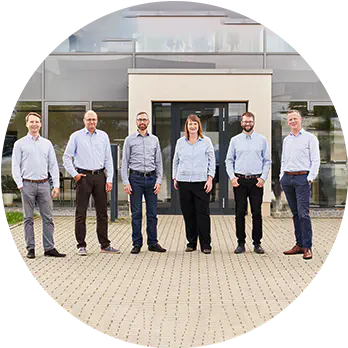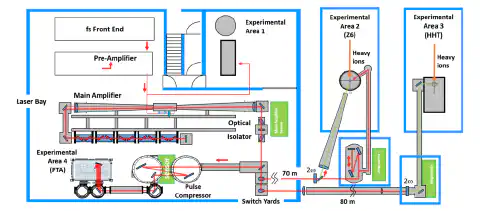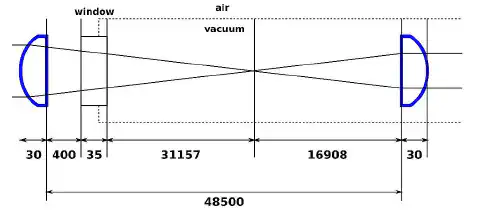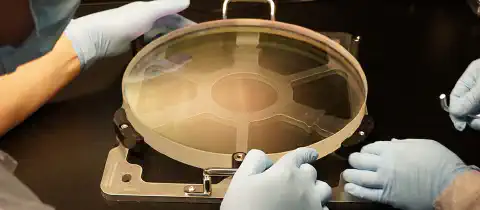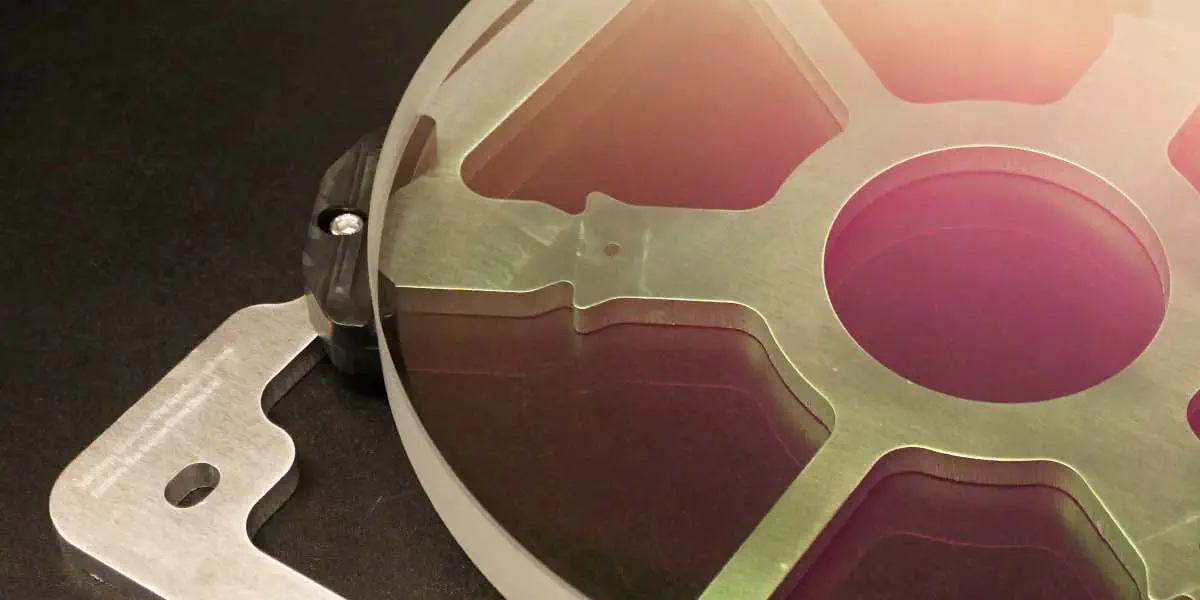
Telescope lenses for high-energy laser PHELIX
Reference project
High-power laser optics for heavy ion experiments
For more than 20 years, research has been carried out at the GSI Helmholtzzentrum für Schwerionenforschung in Darmstadt on the development of a high-power, high-energy laser for fundamental research in the field of high-energy physics. The result is PHELIX (short for Petawatt High Energy Laser for Heavy Ion Experiments), which is used to investigate fundamental processes in plasma physics, astrophysics and atomic physics. The integrated beam guidance of the system, which facilitates combined experiments with heavy ion beams, enables control of the direction of laser beams over a distance of up to 60 m and is carried out with the help of a telescope, which reduces the size of the laser beam with constant beam quality. To achieve the ideal imaging quality, asphericon produced two high-precision optics for this telescope.
Project details
As long ago as the mid-1990s, the GSI Helmholtzzentrum für Schwerionenforschung in Darmstadt began planning and building a high-power, high-energy laser for fundamental research in the field of high-energy physics. The result is the Petawatt High Energy Laser for Heavy Ion Experiments (PHELIX for short), Germany’s largest pulse-operated laser system, which has been available to scientific users for over a decade. PHELIX is used to investigate fundamental processes in plasma physics, astrophysics and atomic physics. The system can generate very short laser pulses of about 500 fs pulse duration and 200 J energy, as well as pulses with high energy and pulse durations in the nanosecond range. GSI’s research is characterized above all by the combination of intense laser pulses and heavy ion beams, which is unique in Europe. The flashlamp-pumped Nd glass system consists of two front ends, a preamplifier and a main amplifier, shown schematically in the following diagram.
Figure 1: Schematic structure of the PHELIX laser system with the beam path marked
Laser beams can be directed to different measuring stations within the set-up via several beam guides up to 60 m long and can then be used for experiments. In order to facilitate combined experiments involving heavy ion beams and high-power lasers, a new beam guidance mechanism was developed. This makes it possible to investigate the matter irradiated with the ion beam from the heavy ion synchrotron using X-ray pulses generated with the PHELIX pulse. The beam guidance includes a telescope, which is designed to reduce the size of the laser beam at a constant beam quality. To achieve the ideal imaging quality, asphericon produced two high-precision optics for this.
Project Realization
High laser intensities within PHELIX put an enormous strain on the integrated optical components. They must also have high accuracies and relatively large diameters in order to make it possible to guide the laser beams over long distances. asphericon manufactured two plano-convex spherical lenses made of fused silica for the beam guidance telescope. Thanks to their diameters of 200 and 350 mm respectively and an RMSi ≤ 50 nm (for three out of four surfaces even < 20 nm), these allow transport of the laser beams over a distance of 48.5 m (see Figure 2) while maintaining the beam quality and withstanding the high laser power because of the special material, which has a laser destruction threshold of 45 J / cmÇ; 1064 nm; 8 ns.
Figure 2: Schematic structure of the telescope consisting of two plano-convex lenses. Values in mm.
For production of the optics, special holding devices (see Figure 3) were made for all process steps and the measurement procedures were individually adapted to the project needs. All lenses were finished with a V-coating. For transportation of the spheres, it was also necessary to produce new packaging. asphericon developed special packaging that is tilt-proof and shock-proof and enabled smooth delivery to the customer.
Figure 3: Holding device and one of the optics manufactured by asphericon.
Optics for PHELIX at a glance:
- Production of two plano-convex spherical lenses made of fused silica, finished with V-coating
- Lens specifications: Diameter 200 and 350 mm; RMSi ≤ 50 nm and < 20 nm
- Development and production of customized holding devices and special tilt-proof, shock-proof packaging
